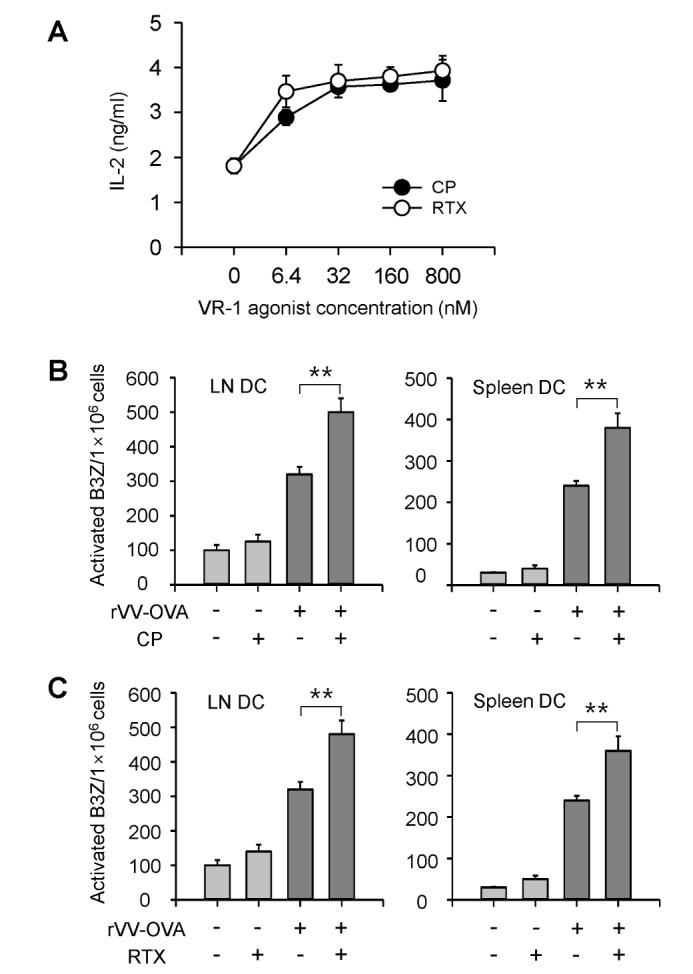Figure 1. VR1 agonists increase MHC class I-restricted OVA presentation in DCs infected with VV-OVA. (A) BM-DCs (1×105/well) generated from C57BL/6 (H-2b) mice were infected with VV-OVA (MOI=5), and cultured for 6 h in the presence of the indicated amounts of CP or RTX. The amounts of H-2Kb-OVA peptide complexes were assessed using CD8 OVA1.3 cells. (B, C) VR1 agonists increased MHC class I-restricted DC presentation of OVA peptides in mice infected with VV-OVA. C57BL/6 mice were orally administered CP (10 mg/kg) or RTX (0.1 mg/kg) was for 3 days, and then then were infected with VV-OVA (5×104 CFUs/mouse, i.v.). After virus infection, the mice were orally administrated the same doses of CP or RTX for consecutive 5 days. On the final day of VR1 agonist administration, DCs were isolated from the lymph nodes and spleens of the mice, and the amounts of Kb-OVA peptide complexes on the cell surface were evaluated using OVA-specific CD8 T hybridoma cells (B3Z cells). **p<0.01.

